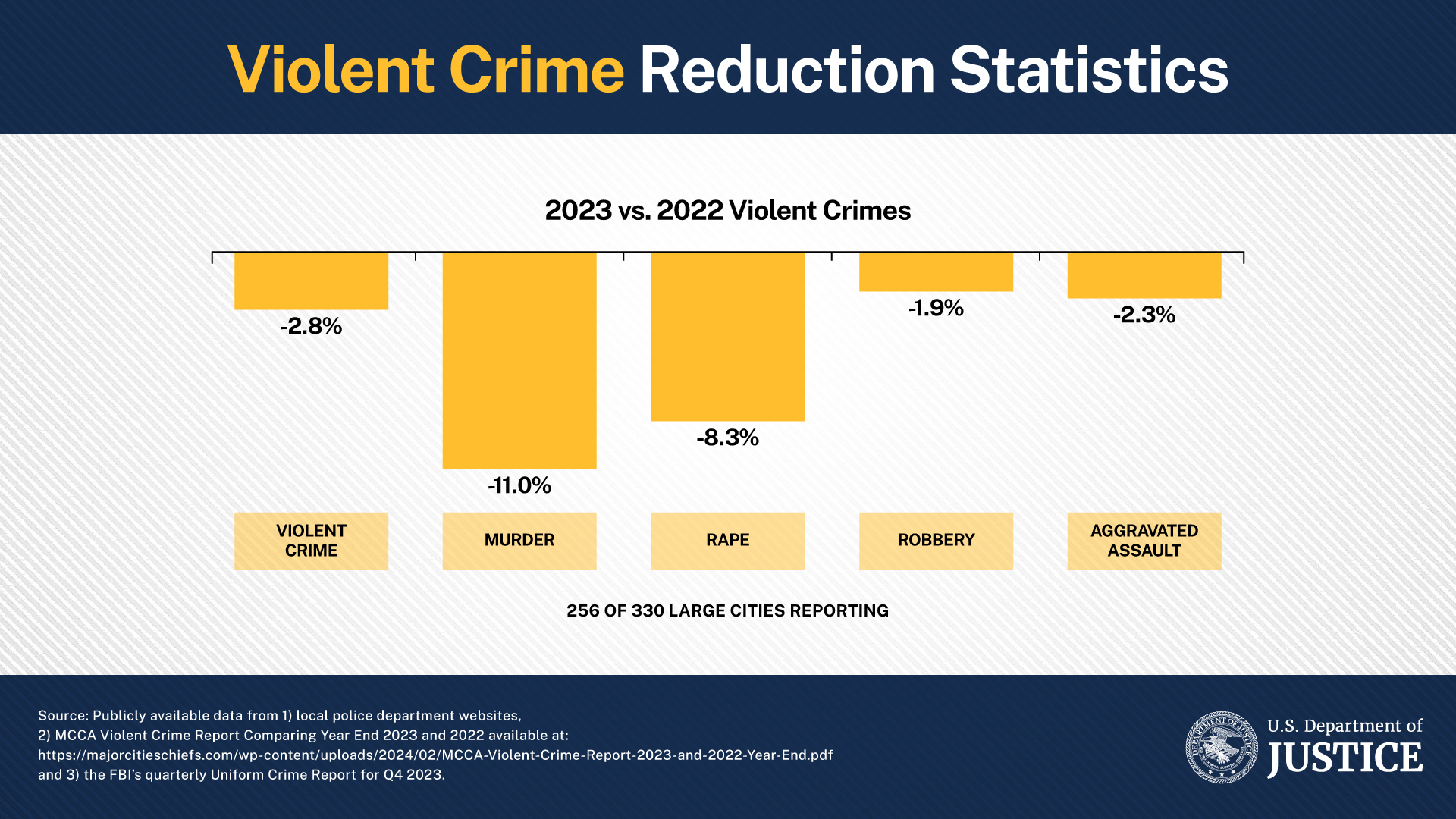Speech
Deputy Attorney General Lisa Monaco Delivers Remarks at ATF’s Third Annual Chiefs of Police Executive Forum on Crime Guns
Location
Washington, DC
United States
Remarks as Prepared for Delivery
Good morning, everyone.
Thank you, Director Dettelbach, for that generous introduction and for your leadership.
And thank you to everyone here at ATF for convening this important event.
It’s an honor to join you all for the third annual ATF Chiefs of Police Executive Forum on Crime Guns.
Together, as chiefs of police, you are leading the charge to keep your communities safe.
Over the next two days, you’ll focus on crime gun intelligence and its critical role in protecting our communities — from preventing firearms trafficking; to stopping the next mass shooting; to detecting other emerging threats.
I can think of no better place for this forum than ATF — the one DOJ component dedicated just to fighting violent crime.
Because, together, that’s exactly what we’re trying to stop.
Now, I’ll start with the bottom-line up front: The Department of Justice has no higher priority than keeping our communities safe.
We are all-in on reversing the violent crime uptick that started during the pandemic in 2020.
I know each of you has been responding to that uptick in your own jurisdictions — each of which face unique challenges.
Since 2021, the Justice Department has been executing a comprehensive strategy to reduce violent crime — a strategy rooted in local communities and built on four pillars:
- Going after the most significant drivers of violent crime — like gun crimes and violent repeat offenders;
- Fostering trust and earning legitimacy in the communities we serve;
- Investing in community-based prevention and intervention programs; and
- Measuring the results of our efforts by impact, through actual decreases in violent crime.
The heart of this strategy is to double down on what federal law enforcement does best:
- Serve as a force multiplier for you, our state, local, and Tribal law enforcement partners;
- Bring the resources needed to go after the drivers of violent crime;
- Surge personnel where most needed; and
- Invest in technology and innovative and data-driven strategies.
Our strategy and our collaboration are paying real dividends, in the form of crimes prevented and lives saved.
And this work together is being spearheaded by all of you — from Philadelphia and Pittsburgh to Chicago and Kansas City to Phoenix and San Antonio.
According to available data from 2023 — which I have on screen here — murder, rape, robbery, and aggravated assault show considerable declines from 2022.
And across 90 large cities, early numbers this year indicate the positive trends are continuing – with an 18% decrease in murders in the first quarter of 2024.
Eighteen percent — and that’s on top of the sizable reduction in 2023.
While we’ve made real progress, this work is far from over.
Despite your tireless efforts — and the positive trends around the country — gun violence is still tearing at our communities.
Just last weekend, right here in Washington, D.C., we saw a tragic set of shootings that claimed three lives, including a 15-year-old.
The danger of violence is not limited to the citizens you protect.
It extends to law enforcement officers who face life-threatening situations every day.
In April, our country was once again reminded of the sacrifices you make every day — when four members of law enforcement, including a Deputy U.S. Marshal, were tragically killed serving a warrant in Charlotte, North Carolina.
This is part of a larger trend.
From 2021 to 2023, more officers were feloniously killed than in any other consecutive three-year period in the past 20 years.
And far and away, firearms are the most common weapon used in those officer deaths.
This is unacceptable, and it needs to stop.
So, to address the violence afflicting our children and our communities; to protect law enforcement; and to hold violent criminals accountable, we’re doubling down on an essential ingredient at our fingertips: crime gun intelligence.
Crime gun intelligence centers — or CGICs — use cutting-edge technology to solve and prevent crimes — technology that traces firearms from crime scenes; that links ballistics evidence and connects shootings; and that identifies the gun traffickers and straw purchasers arming gang members and other violent criminals.
CGICs combine law enforcement personnel from across federal, state, and local agencies, along with technology and data, to swiftly generate more leads — leads to identify the most prolific trigger pullers and take them off the streets, so we can push case-closure rates up and drive violent crime down.
The critical importance of crime gun intelligence was made real a few months ago in Chicago.
Days after coming together with federal and state partners to launch its expanded crime gun intelligence center, the Chicago Police Department lost one of their own when Officer Luis Huesca was shot and killed on his way home from a shift.
Using ballistics and firearms evidence processed through the Crime Gun Intelligence Center in Chicago, the ATF, the Chicago Police Department, and their CGIC partners were able to link a suspect to Officer Huesca’s death, leading to an arrest within weeks.
Put simply, crime gun intelligence fuels the best of 21st Century policing — data-driven, surgical, and targeted at the root drivers of violent crime.
And when paired with community involvement and results-oriented investment in prevention, it represents the future of policing in America.
Now, crime gun intelligence is indeed making an impact — but it’s only effective if state and local enforcement can deploy it.
We need to bring more crime gun intelligence to more law enforcement agencies, in more jurisdictions, more quickly than ever before — from the smallest towns to the biggest cities.
For the past eight years, the Bureau of Justice Assistance has invested more than $40 million into CGICs across the country – and many of those recipients have seen gun violence decrease in their communities after investment.
In the coming weeks, agencies will be able to apply for the next round of grants, totaling $4 million, to expand existing CGIC sites and launch new ones.
The return on this investment is profound.
It’s calculated in lives saved, families united, and streets made safer.
You’ll have the chance to learn more about this grantmaking process tomorrow afternoon in a session with the Bureau of Justice Assistance.
To close out, I want to express my gratitude to all of you for your leadership.
As chiefs, you are on the frontlines of keeping your communities safe — and you’re leading dedicated teams in those efforts.
I know, at times, you and your teams don’t receive the credit you deserve.
Always being asked to do more — often with less.
But let me take this moment to be very clear: The Department of Justice is grateful for your service — and for the sacrifices you make every day alongside your fellow law enforcement officers.
We stand with you every day, and we’re so proud to do so.
Thank you all you do to keep our country safe. And thank you for being here today.
Topics
Firearms Offenses
Violent Crime
Components
Updated February 5, 2025

 U.S. Department
of Justice
U.S. Department
of Justice



